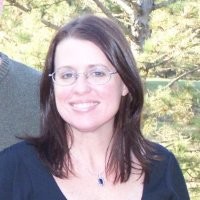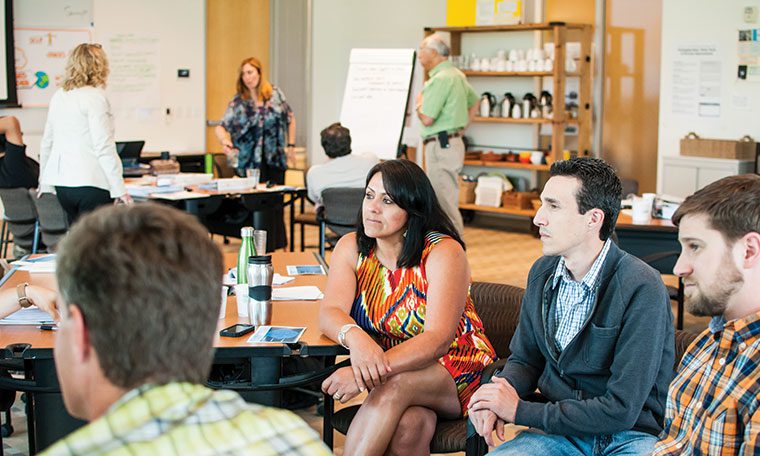In 1987, Rachel Berliner was pregnant with her daughter Amy and on bed rest so her husband Andy went looking for ready-made meals at their natural grocery store. When he couldn’t find anything organic and vegetarian to meet the young couple’s dietary needs, they decided to make them on their own.
That was the beginning of Amy’s Kitchen Inc., a family-owned maker of organic vegetarian and vegan meals like rustic Italian vegetable soup and black bean and quinoa burritos. Thirty years later, the Santa Rosa, California-based company has 2,400 employees producing more than 170 types of frozen and prepackaged vegetarian meals and products and recently expanded into fast food service with a drive-through organic and vegetarian restaurant.
Amy’s has grown steadily from the beginning, particularly in the manufacturing division, said Cindy Gillespie, vice president of HR. And as with many successful businesses, they faced growing pains. “As we expanded, we had a lot more managers but we had no path where they could develop the skills to become leaders,” she said.
They considered sending rising leaders to external leadership training but it didn’t feel like the right fit. The leadership team wanted a development program that aligned with the idiosyncrasies of their homegrown culture. “Our people needed to learn what it means to be a leader at Amy’s,” she said. “They weren’t going to get that from an outside course.”
So, just like in the story behind the launch of the company, they decided to make their own.
Watch and Learn
Gillespie’s group didn’t have any experience developing a leadership curriculum so they partnered with Enact Leadership, a San Francisco-based leadership development firm, to create a custom program for Amy’s.
Enact consultants started the process by observing Amy’s culture and leadership practices, then worked with a cross-functional team of Amy’s leaders to develop programs using specific Amy’s case studies, examples and business goals as the framework.

While observing the Amy’s leadership culture, the Enact team recognized that one of the biggest challenges would be how to give learners the tools and skills they needed at the right time. “This is not the kind of corporate culture where leaders are inclined to spend days quietly focused on themselves,” said Pamela Hopkins, Enact’s managing partner.
They knew the learning would have to be immediately applicable and not overly burdensome. That led them to create an immersive learning format where a cohort of leaders spends two days per month in training over the course of six months. They then take a 90-day break to apply the new skills and develop a sustainable leadership project which they present at the final capstone academy event.
The capstone projects focus on sustainability initiatives like reducing waste or improving energy efficiency in a specific department. “It reinforces the sustainable culture at Amy’s while letting participants apply their leadership skills on the job,” Gillespie said.
Throughout the process of developing the programming, Enact worked closely with Amy’s cross-functional team, which was crucial to getting the programming right, said Hopkins. “They established the goals and vision for the program and they provided feedback on each course as it was developed,” she said.
That helped her group validate whether they were on track and to hone the content before rolling anything out. For example, one of the first modules in the program is on self-awareness as a leader. In the initial draft of that lesson, Amy’s leaders pointed out the importance of emotional intelligence to being successful at Amy’s.
“It was not an area we had explored,” Hopkins said. But based on that feedback, they built in real-life empathy scenarios from the point of view of different stakeholders in the organization. “It was a huge shift that added a lot of value to the course,” she said.
The leadership team also participated in the pilot offering of the leadership academy program and provided feedback from a student’s perspective before it was rolled out to the whole company. “It was incredibly helpful in making sure the content was appropriate for their needs,” Hopkins said. “Not every company does that.”
Motivated Learners Only
Once the program was ready, Gillespie’s team decided they didn’t want to force people to participate. “We wanted people who wanted to be there; who would show up ready to learn,” she said.
So they required participants to apply to the program and get an executive sponsor to support them. “The first class only had 16 people but they all wanted to be there and it was an amazing experience,” she said.
Once in the program, each day of training is dedicated to a different set of leadership skills or behaviors and many of the courses are led by Amy’s executives. Along with a self-assessment, lessons include business management skills, how to work with suppliers, how to be a good coach and what it means to be a sustainable leader, one of the company’s core values. Each module includes case studies from Amy’s and videos of customers and leaders. Students are also given time to share their own experiences and to problem-solve as a group.

“While there are definitely core management skills taught in the program, the biggest outcome is helping leaders identify their own leadership style,” said Eli Hamlin, Amy’s director of manufacturing, who is a member of the cross-functional leadership team and a participant in the initial program.
One thing Hamlin took from the training was how to create an accountability loop, which is based on lessons from the book “The Power of Personal Accountability” by Mark Samuel and Sophie Chiche.
“Each of us at some time goes into victim mode to avoid blame or rationalize outcomes,” Hamlin explained. The course taught him to be accountable and hold others accountable as a leader. Hamlin was so affected by this lesson that he invited the authors to present to his team and they now use it for all of their team meetings and communication, calling each other out when they fall into victim mode. “It has been a powerful tool for my team,” he said.
Hamlin has also sponsored several of his own team to apply for the program and hopes to send all of his rising managers through it. “It’s a great opportunity for them and it means that we are all speaking the same language,” he said.
Constantly evolving
Now in its fifth year, Amy’s Leadership Academy is having a noticeable impact on the company. Of the approximately 90 leaders to go through the program, 40 percent have been promoted or had their role expanded and Gillespie now regularly receives more than twice the number of applicants as spots available. She continues to hold the number of participants to about 24 per class so participants have an opportunity to build relationships over time.
She also opened the program up to lower level managers including those in other locations who have to travel to participate, which the company pays for. “These are all indications the program is going in the right direction,” Gillespie said.
The leadership team continues to tweak courses. Last year they replaced a finance module with a supply chain management course because they felt it was more important for leaders to learn the culture of managing suppliers, whereas finance training is fairly generic and can be achieved through other avenues.
“You have to be willing to evolve, otherwise you become obsolete,” Gillespie said.
Companies also have to be sure their leaders are willing to invest the time and resource to build a program that meets the needs of their culture, Hamlin said. It took nearly two years for Amy’s to develop and pilot the Leadership Academy and the leadership team still meets twice a year to review feedback from participants and select the next cohort.
“It can be daunting, especially when you might not see results for a few years,” he said. “But once you get going the process feeds itself and that’s when the magic happens.”
Sarah Fister Gale is a writer based in Chicago. Comment below or email editor@CLOmedia.com.















